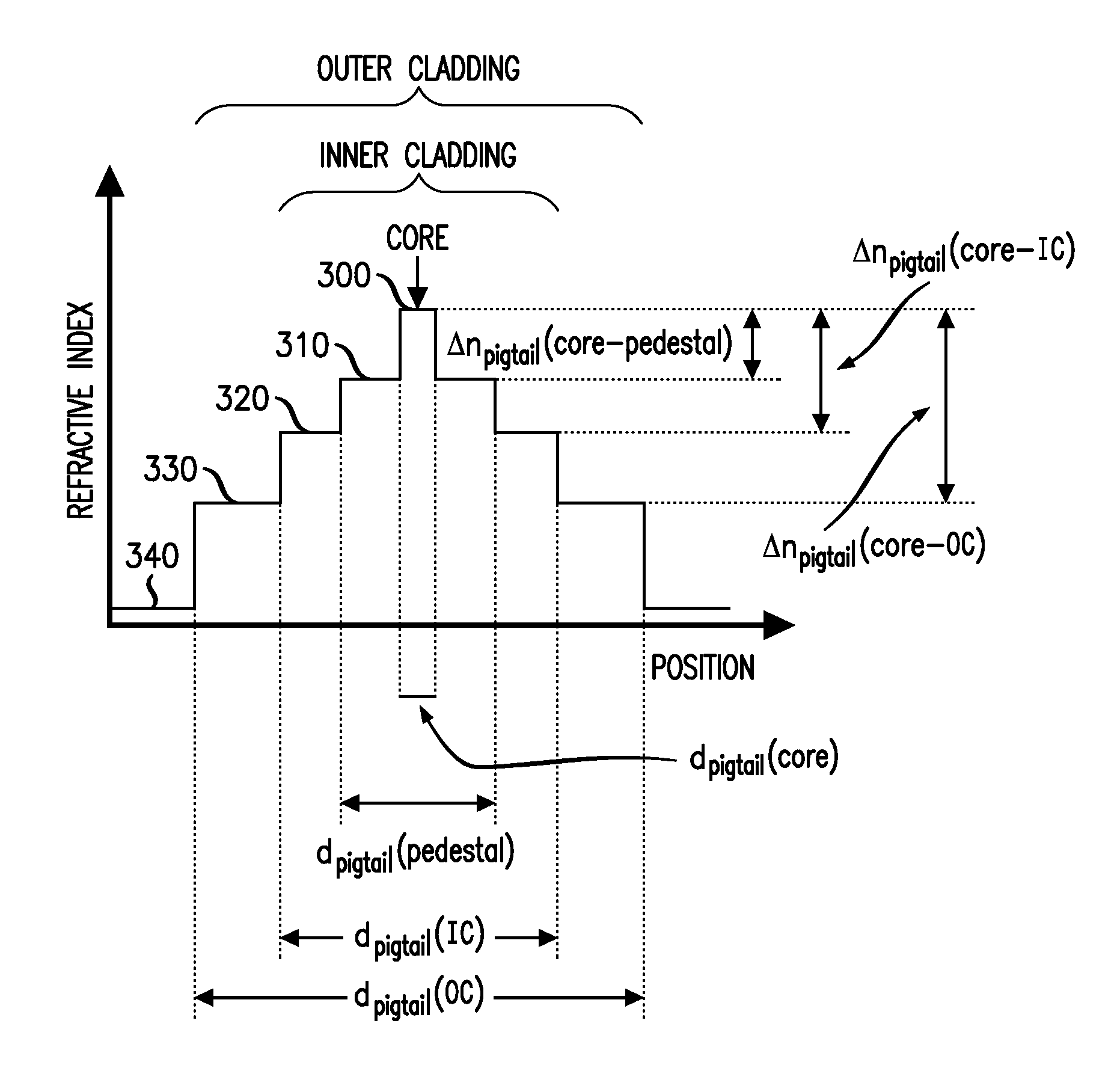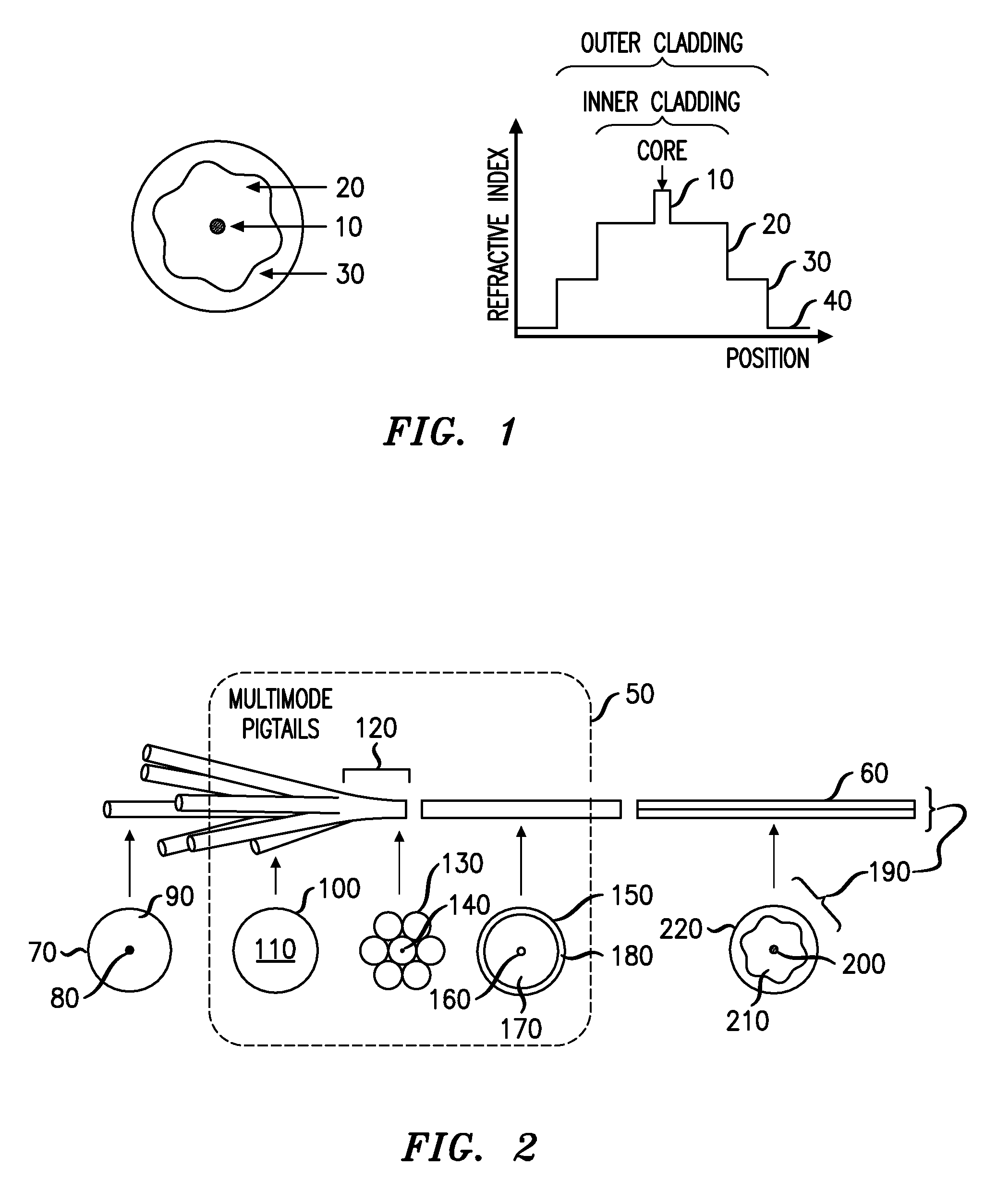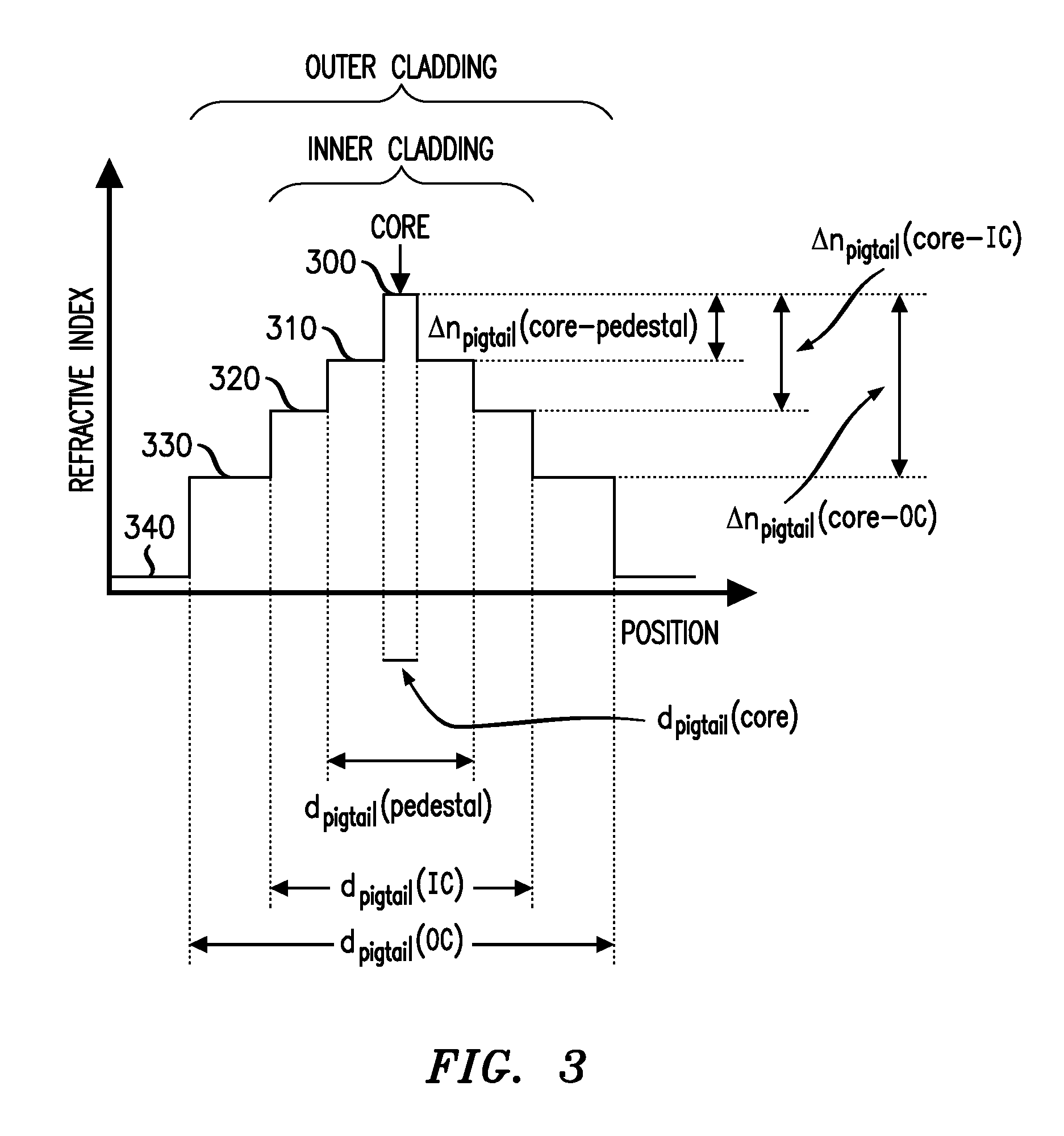Pumping arrangement for fiber amplifiers with reduced reflective feedback
a technology of fiber amplifiers and reflective feedback, applied in the direction of bundled fibre light guides, optical elements, instruments, etc., can solve problems such as unsatisfactory reflections, and achieve the effect of increasing mode-field confinemen
- Summary
- Abstract
- Description
- Claims
- Application Information
AI Technical Summary
Benefits of technology
Problems solved by technology
Method used
Image
Examples
example
[0066]We performed an experiment to demonstrate that CPF performance can be improved by suppressing the modal coupling effects described above. In our experiment, an erbium-ytterbium CPF amplifier was spliced at each end to a seven-fiber TFB to provide pump light that would both co-propagate and counter-propagate relative to the input signal. The CPF inner waveguide was designed to support several guided modes at the signal wavelength. A one-watt input signal was injected through the center fiber of one of the TFBs. A high-power diode laser injecting light into one MM fiber leg of each TFB provided up to 20 watts of pump power per TFB at 975 nm. The five unused MM fibers of each TFB were straight cleaved to provide a 4% Fresnel reflection at each end facet, in addition to the reflections at the pump diodes.
[0067]We increased the pump power until we observed sharp features in the spectral structure in the 1060-nm band ASE spectrum of the CPF amplifier. Such structure may indicate the...
PUM
 Login to View More
Login to View More Abstract
Description
Claims
Application Information
 Login to View More
Login to View More - R&D
- Intellectual Property
- Life Sciences
- Materials
- Tech Scout
- Unparalleled Data Quality
- Higher Quality Content
- 60% Fewer Hallucinations
Browse by: Latest US Patents, China's latest patents, Technical Efficacy Thesaurus, Application Domain, Technology Topic, Popular Technical Reports.
© 2025 PatSnap. All rights reserved.Legal|Privacy policy|Modern Slavery Act Transparency Statement|Sitemap|About US| Contact US: help@patsnap.com



